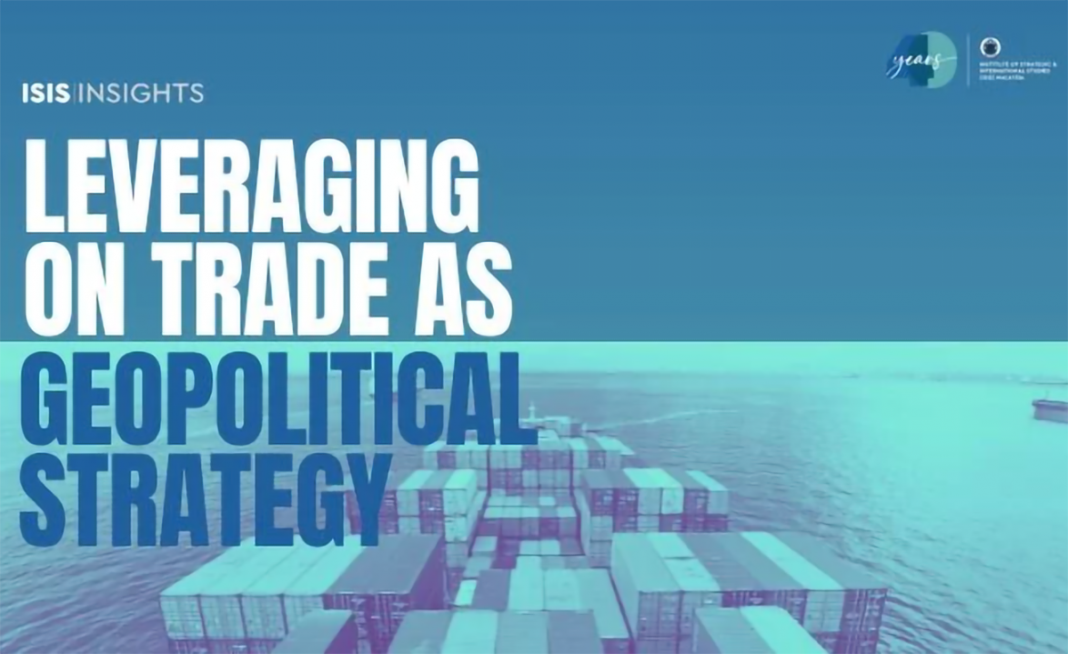Calls to withdraw from FTAs could jeopardise national interests as regional rivalry heats up
AS we welcome a new year, the regional geopolitical environment in Asia-Pacific remains in flux and dominated by major power rivalry between China and the United States. Despite more regularised senior-level meetings between the two powers, Beijing’s guarded, strident tone on foreign outlook at the 20th Communist Party congress and Washington’s targeted sanctions against China’s tech and semiconductor sector show that this rivalry remains coloured by a state of adversity.
These developments, involving Malaysia’s key trade partners, have reshaped our strategic environment and long-term choices. Yet while the risks are real, opportunities remain. As a key cog in global supply chains, regional and multilateral trade is a strategically advantageous sector for Malaysia to optimise its geopolitical and regional security outlook. But we must be astute and daring enough to seek out the strategic calculations, and act on it.
FTAs galore
Last year was an important marker for Malaysia in this regard. In January, Malaysia submitted its instrument of ratification for the Regional Comprehensive Economic Partnership (RCEP), which is expected to strengthen Asia-based supply chains for Asian markets. With 10 Asean member states plus China, South Korea, Japan, Australia, and New Zealand, it is one of the world’s biggest free trade agreements covering roughly 30% of the global population and gross domestic product.
Four months later, we joined Indo-Pacific Economic Framework for Prosperity (IPEF), proposed by the US during its special summit with Asean. While specific initiatives are yet to be determined, statements from the former trade and industry minister emphasised that Malaysia would be looking to participate in all four pillars of IPEF – trade, supply chains, clean and fair economy.
Interestingly, Malaysia signed on despite IPEF lacking what we really desire – greater access to the American market. Yet going ahead was important, not just from a first-mover perspective but also as a signal to Washington and the wider Asia-Pacific region that Malaysia was receptive to the former’s attempts to connect economically with the region, and as another avenue to balance its broader political and strategic major-power engagement.
Similarly, Malaysia ratified the CPTPP at the end of September, four years after signing the agreement. CPTPP will see the gradual reduction of up to 95% of tariffs, providing Malaysian companies with greater access to existing trade partners, and the new markets of Canada, Mexico, and Peru, which are not covered by any existing FTA.
The long period leading up to the ratification was mainly spent on managing stakeholders from the government, private sector and special interest groups, and securing carve-outs to maximise external access but allow for some degree of local protection.
In early December, new Foreign Minister Dr Zambry Abd Kadir signed the Partnership and Cooperation Agreement (PCA) with the European Union in Brussels. Key aspects of the PCA include a focus on energy, transport, trade and employment. This could set the stage for the resumption of long-delayed negotiations on the Malaysia-EU FTA.
Key semiconductor player
Malaysia continues to demonstrate proactivity on key segments of its international exports, namely the microchip and semiconductor industry. Malaysia and the US have formally committed to strengthen semiconductor supply chain resiliency and promote its sustainable and secure growth amid an ongoing chip shortage via a memorandum of cooperation signed in May 2022.
This sector makes up 20.5% of our global exports – outpacing hydrocarbons and palm oil products – which makes Malaysia an important player in the global supply chain. Malaysia’s commitment to this level of cooperation is notable, given the increasing focus on semiconductors within the scope of geopolitical rivalry between the US and China.
These decisions should not come as any surprise. Wisma Putra lists trade as one of the three factors that shape Malaysia’s foreign policy. The other two are also trade related. Malaysia’s strategic position in Southeast Asia, between major maritime trade routes and its multi-ethnic demographic could be leveraged on, given the rise of China and India as regional economic powers.
Leveraging on trade
Malaysian leaders have consistently emphasised friendly, if not functional, relations with external stakeholders to ensure that trade, development and economic progress remain unhindered.
Some domestic stakeholders and diplomats based in Malaysia have expressed surprise at Putrajaya’s positions on the CPTPP, IPEF and semiconductor engagements with the US, given our strong relationship with China and comprehensive participation in the Belt and Road Initiative. This indicates a lack of understanding on the importance of trade in Malaysia’s strategic calculations.
For a for a non-aligned and risk-averse country, it also shows just how clear-eyed Malaysian policymakers can be on that score, regardless of their political stripes, working to secure trade priorities while navigating major power dynamics.
Calls to pull out of the CPTPP or any other multilateral FTA need to be studied carefully. There are strategic costs to these decisions that go beyond investor confidence and the local economy. It is more crucial at a time when memberships of FTAs and regional trade initiatives have come to (unfairly) signal a country’s decision to “side” with one power over another.
Despite assurances to the contrary, countries like Malaysia are increasingly faced with the possibility of a binary choice by both the US and China. This is not of our own choosing.
Malaysia’s approach to leverage on multiple initiatives is not just important marker of its non-alignment in the face of competing initiatives but one of looking out for our strategic interests in an increasingly adversarial regional environment.
This article was also published on FACTS Asia here





